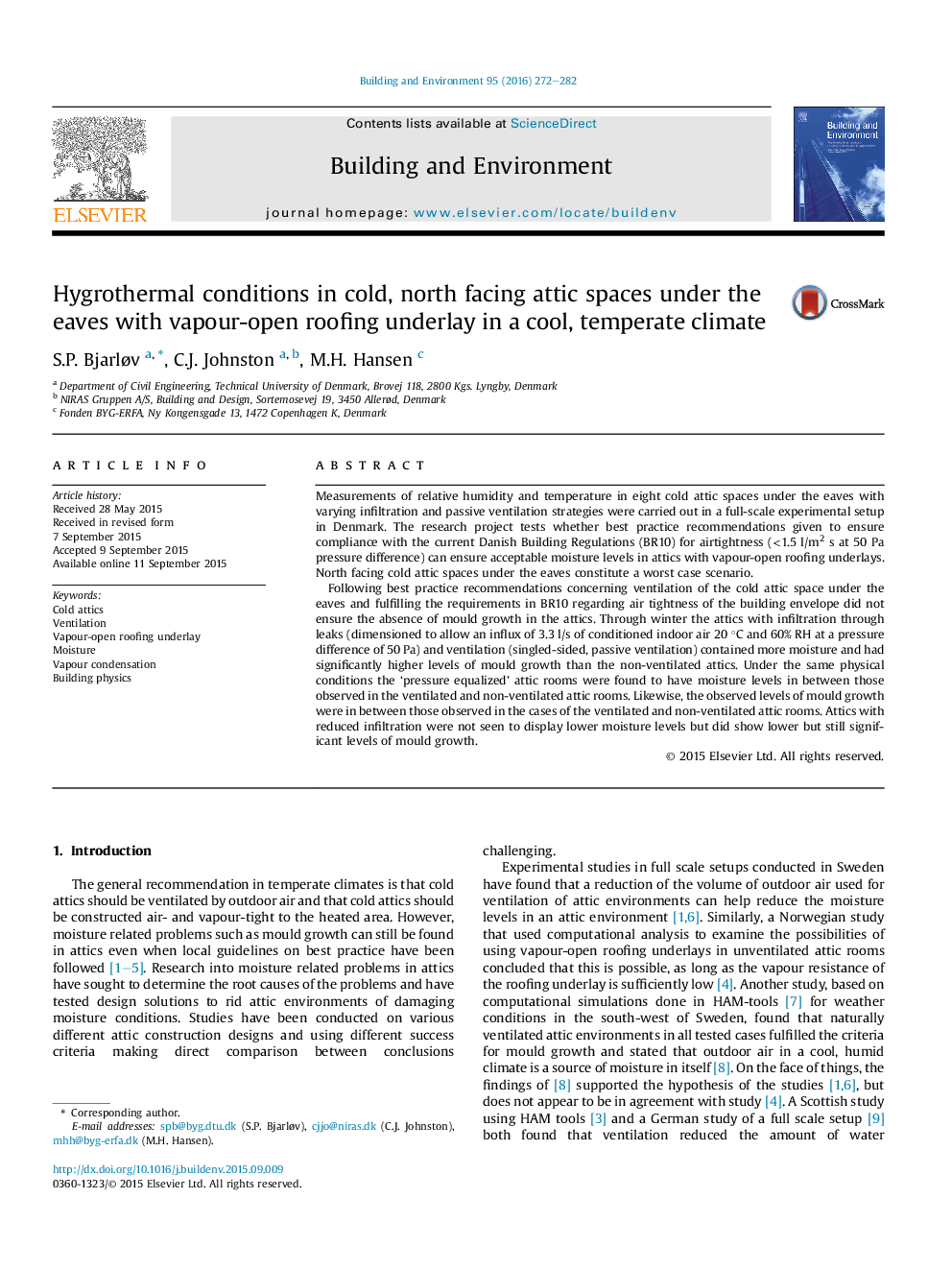| کد مقاله | کد نشریه | سال انتشار | مقاله انگلیسی | نسخه تمام متن |
|---|---|---|---|---|
| 247773 | 502526 | 2016 | 11 صفحه PDF | دانلود رایگان |
• Local guidelines on best practice do not ensure acceptable moisture levels in cold attic spaces under the eaves.
• The single-sided, passive ventilation designs exacerbated moisture problems in the experiment.
• Single-sided, passive ventilation is more akin to untight roof/ceiling construction than to attic ventilation.
• The overall airtightness of the roof construction is significant for the hygrothermal environment in attic spaces.
• The roofing underlay allows diffusion into the attic when exterior vapour pressures are higher than attic vapour pressures.
Measurements of relative humidity and temperature in eight cold attic spaces under the eaves with varying infiltration and passive ventilation strategies were carried out in a full-scale experimental setup in Denmark. The research project tests whether best practice recommendations given to ensure compliance with the current Danish Building Regulations (BR10) for airtightness (<1.5 l/m2 s at 50 Pa pressure difference) can ensure acceptable moisture levels in attics with vapour-open roofing underlays. North facing cold attic spaces under the eaves constitute a worst case scenario.Following best practice recommendations concerning ventilation of the cold attic space under the eaves and fulfilling the requirements in BR10 regarding air tightness of the building envelope did not ensure the absence of mould growth in the attics. Through winter the attics with infiltration through leaks (dimensioned to allow an influx of 3.3 l/s of conditioned indoor air 20 °C and 60% RH at a pressure difference of 50 Pa) and ventilation (singled-sided, passive ventilation) contained more moisture and had significantly higher levels of mould growth than the non-ventilated attics. Under the same physical conditions the ‘pressure equalized’ attic rooms were found to have moisture levels in between those observed in the ventilated and non-ventilated attic rooms. Likewise, the observed levels of mould growth were in between those observed in the cases of the ventilated and non-ventilated attic rooms. Attics with reduced infiltration were not seen to display lower moisture levels but did show lower but still significant levels of mould growth.
Journal: Building and Environment - Volume 95, January 2016, Pages 272–282
